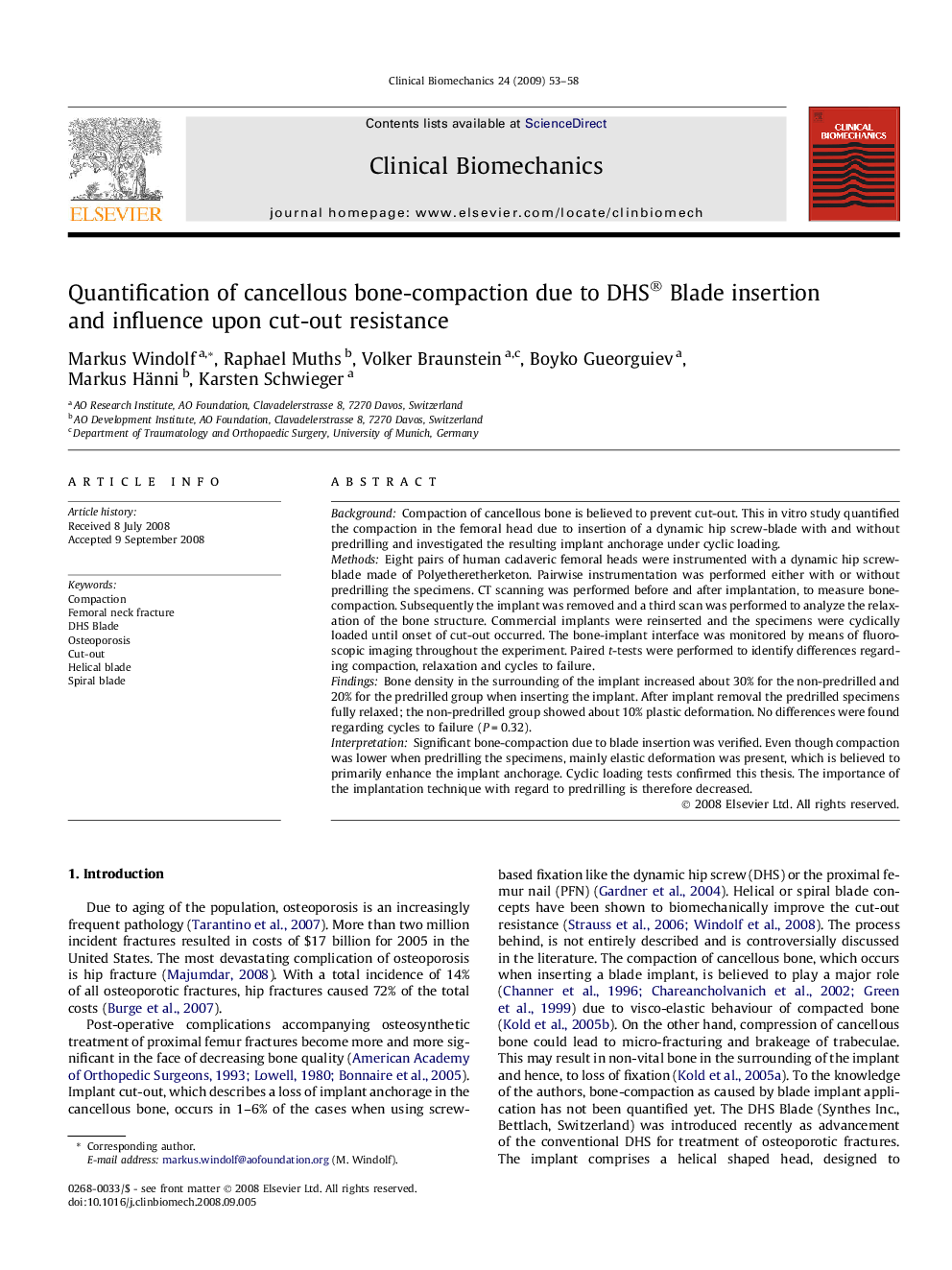| Article ID | Journal | Published Year | Pages | File Type |
|---|---|---|---|---|
| 4050844 | Clinical Biomechanics | 2009 | 6 Pages |
BackgroundCompaction of cancellous bone is believed to prevent cut-out. This in vitro study quantified the compaction in the femoral head due to insertion of a dynamic hip screw-blade with and without predrilling and investigated the resulting implant anchorage under cyclic loading.MethodsEight pairs of human cadaveric femoral heads were instrumented with a dynamic hip screw-blade made of Polyetheretherketon. Pairwise instrumentation was performed either with or without predrilling the specimens. CT scanning was performed before and after implantation, to measure bone-compaction. Subsequently the implant was removed and a third scan was performed to analyze the relaxation of the bone structure. Commercial implants were reinserted and the specimens were cyclically loaded until onset of cut-out occurred. The bone-implant interface was monitored by means of fluoroscopic imaging throughout the experiment. Paired t-tests were performed to identify differences regarding compaction, relaxation and cycles to failure.FindingsBone density in the surrounding of the implant increased about 30% for the non-predrilled and 20% for the predrilled group when inserting the implant. After implant removal the predrilled specimens fully relaxed; the non-predrilled group showed about 10% plastic deformation. No differences were found regarding cycles to failure (P = 0.32).InterpretationSignificant bone-compaction due to blade insertion was verified. Even though compaction was lower when predrilling the specimens, mainly elastic deformation was present, which is believed to primarily enhance the implant anchorage. Cyclic loading tests confirmed this thesis. The importance of the implantation technique with regard to predrilling is therefore decreased.
